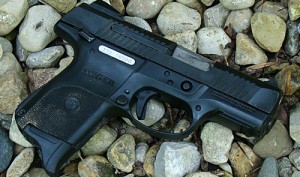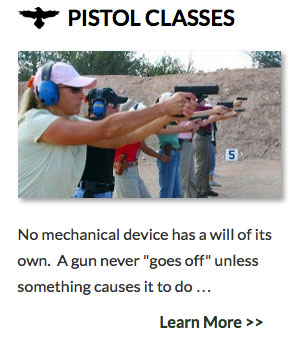Widgetized Section
Go to Admin » Appearance » Widgets » and move Gabfire Widget: Social into that MastheadOverlay zone
Quest for Master Class – Run and Gun
 This past weekend just north of Indianapolis, over 200 shooters got together to shoot the Indiana USPSA Section Championship Match. This is the largest Section match in USPSA and attracts top flight grandmasters from surrounding states. This year, I was among the shooters at the match running the Ruger SR9c as a part of the Quest for Master Class. Let’s take a look at some of the stages and my thoughts on the match:
This past weekend just north of Indianapolis, over 200 shooters got together to shoot the Indiana USPSA Section Championship Match. This is the largest Section match in USPSA and attracts top flight grandmasters from surrounding states. This year, I was among the shooters at the match running the Ruger SR9c as a part of the Quest for Master Class. Let’s take a look at some of the stages and my thoughts on the match:
Now, a lot of people are probably wondering out there “hey, I thought this was the quest for IDPA’s master class, not USPSA?” Well, you’d be correct in that the end goal of all of this is to get IDPA’s 5 gun master designation. However, USPSA is a great stepping stone to get us to that platform. Just like last week were we talked about the benefits of shooting steel to an IDPA shooter, today we want to look at the benefits of shooting USPSA to a primarily IDPA shooter. First thing I’m going to do is list some names for you.
- Dave Sevigny
- Jerry Miculek
- Bob Vogel
IDPA has two national championships each year, the S&W Indoor nationals and the National Championships later in the year. Looking at Stock Service Pistol, Enhanced Service Pistol, and Enhanced Service Revolver, those three guys above have won their divisions at every single Indoor and National championship going back to 2008. Jerry has absolutely dominated, he’s won ESR at both Nationals (Indoor and regular) forever. What do all three of those guys have in common other than being great shots? They’re all USPSA GrandMasters and primarily shoot USPSA. Now we’re not trying to start an IDPA vs. USPSA shouting match here, in fact just the opposite. But the fact of the matter is that USPSA requires you to do things that you don’t do in IDPA, and doing those things makes you better at IDPA. For example, in IDPA you’d never have a stage with 8 steel targets and then 24 paper targets that require a single shot. USPSA allows that, and it’s precisely that sort of practice that improves you as an IDPA shooter.
Show me the money
Of course, I can say that shooting USPSA makes you a better IDPA shooter until I’m blue in the face, but you don’t have to believe me. In fact, I didn’t believe it until I tried it. I was very successful at my club, often winning IDPA club matches outright and generally considered “good” in our IDPA circle. So I went and shot a club level USPSA match, and I got destroyed. It wasn’t even close. I did things that don’t make sense to do in the context of USPSA, because I wasn’t used to the problem solving element of USPSA. That’s where a USPSA shooter has an advantage over a pure IDPA shooter – the mental game. In a USPSA stage it’s simply “shoot it like you want and stay safe”, there are no rules for engagement procedure, so it’s up to the shooter to solve the shooting problem. IDPA generally has very specific rules of engagement for scenarios, although that’s not necessary according to the rules – it’s become a culture thing. However, the aspect of USPSA that teaches you to think on your feet will make you a better IDPA shooter. In USPSA, you’re using every possible aspect to your advantage – footwork, approach lines, anything you can do to shave precious 10ths of a second off your time. If you take that mindset of attacking the course to IDPA, you’ll improve. I have! I’ve started shooting USPSA with much more frequency and I’ve already seen my IDPA scores improve as I look for the most efficient way to shoot IDPA’s stages.
The Match
At the Indiana USPSA Section match, I was once again shooting the Ruger SR9c. Because of USPSA’s rules, I was automatically at a disadvantage, because the Ruger SR9c isn’t legal for Production division, thus landing me in Limited-10, shooting against race guns that score more points. The Ruger did its part though, shooting accurately and trouble free for 276 rounds of 147 grain FMJ. In fact, the Ruger was so easy to shoot I ended up finishing in 12th place overall in Limited- 10, which considering the handicaps imposed on me by USPSA’s rules I’m extremely happy with that.
Speaking of the gun, this match was a testament to how well it runs. When being fed decent ammo, the gun simply shoots, then shoots some more. In 90 degree heat, not being cleaned or lubricated, getting dirty from my hands, and still shooting. I’ve now fired over 1000 rounds through the Ruger in less than a month – that’s more shooting that most people will put on their guns in a year and it’s still ticking along. I’m quite pleased with the little gun and how well it handles. The 3.5 inch barrel is fast out of the holster and has more than enough accuracy to get the job done. In fact, I kind of wish that Ruger would make this gun with the full length grip but the short barrel. I like a little bit more gun to hold on to, but I’m starting to kind of like how fast a short barreled gun handles. Ruger definitely has a winner here.
Check out next week when we’ll be shooting Stage 1 of the IDPA classifier and looking at a drill to improve your draw speed!
Quest for Master Class Statistics
Rounds Fired: 1075
Fastest Time: 84.66
Club Matches Won: 2
Major Match Best Finish: 12th
ESP Classification: Sharpshooter
SSP Classification: Expert



 MidwayUSA
MidwayUSA Ruger Firearms
Ruger Firearms SCCY Firearms
SCCY Firearms Streamlight
Streamlight Action Targets
Action Targets Gunsite Academy
Gunsite Academy
4 Responses to Quest for Master Class – Run and Gun
You must be logged in to post a comment Login